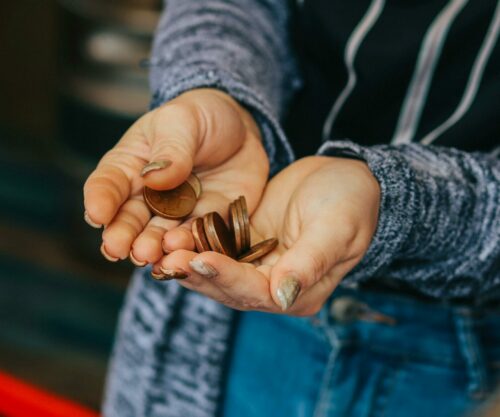
Known as the “Chama” in Tanzania and “Susu” in Ghana, the humble Stokvel is undeniably the most popular savings and investment tool for the African woman. But, the tried and tested Stokvel may be complex – and more lucrative – than you think.By Samke Mhlongo
Anyone that’s my friend on social media will know how much I absolutely love meeting and engaging with people from all over our beautiful continent. I am always so fascinated at how different yet similar our cultures, behaviours and desires are.
It was during lunch with my Tanzanian friend Irene Kiwia that I started talking about all things wealth creation – no surprises there. What did shock the twang from this Zulu girl was the fact that Irene, the designer-bag carrying, red-bottom heel wearing, green-juice drinking, successful business owner and CEO of Frontline Management, was using iStokvel as her preferred investment instrument.
This had me thinking about how much I actually knew about the workings of stokvels. And with large companies such as Pick ‘n Pay, Boxer Cash and Carry, ABSA and African Bank putting together products specifically designed to meet stokvels’ needs, I decided it was time to brush up on my knowledge of how this R49 billion investment vehicle really works, and stop relying on the assumptions I have made over the years. Assumptions that I found to be as close to the truth as I am to jogging three times a week – FAR!
Unpacking stokvel
In summary, a stokvel is a structured savings group that meets at pre-agreed dates and times, to either add to the investment or payout the stokvel’s savings.
In reality, they are much more complex than that, as I discovered after consulting with the only “stokveller” in my house – my nanny Aus’ Sarah Mosidi. I asked Aus’ Sarah to give me the low-down on stokvels and after rolling her eyes and giving me a big sigh (don’t worry, we love each other), she explained they are much more structured than we think. She explained that each stokvel has a president, who is tasked with the coordination of meetings; a treasurer, who manages the financials of the club; and a secretary, who minutes all the meetings and decisions.
Each stokvel also has a constitution, a document that provides guidance on how disputes, cancellations and missing payments will be handled.
The stokvel meeting itself is formal and structured, and follows a meeting agenda. She continues that at the meeting, each member is required to make their monthly investment contribution, but also a donation for “the plate” (towards the meeting’s catering). Once the formalities are done, the members are then free to lunch and socialize.
Forms of stokvels
I’m supposed to be the “finance guru” but I honestly did not know there are different types of stokvels.
The first type is the “traditional” stokvel, where money is collected monthly from all members, and distributed to pre-selected members on a rotational basis.
The second type is the groceries stokvel, where contributions are received throughout the year for the purchasing of grocery items at pre-determined intervals.
Finally, some stokvels save money over a longer period, with the view that the balance will grow into a much bigger lump sum that is paid out annually. These are investment stokvels.
Interestingly enough, the Old Mutual 2017 Savings and Investment monitor reports that nearly two-thirds of all stokvels are investment stokvels whilst only 22% of stokvels being groceries stokvels.
Investment Styles
Stokvels will have different investment styles for the different types they are. There are three main ways in which stokvels capitalize the money they collect every month: Under the mattress; Mashonisa, and Stokvel account.
- Under the mattress
Aus’ Sarah and many of her friends belong to two or more stokvels and she disagrees that stokvel members still keep their money under the mattress. Although this may have been the case in the 80s and 90s, many stokvel members are now more financially sophisticated and have no fear of the group’s savings being placed in an account. The second way to invest the stokvels’s funds with a much higher interest return is as a mashonisa (an individual that gives small loans to people in the community).
- Mashonisa Credit Facilities
Many stokvels act as micro lenders, lending out small amounts of money at high interest rates, to the local community. This practice is illegal in South Africa though, as the Microfinance Regulatory Council (MFRC) requires that ALL micro lenders be registered with them before they can start lending some money out.
- Stokvel Account
Banks such as ABSA and Nedbank, together with retailers such as Pick n’ Pay and Boxer Cash and Carry, have created stokvel accounts. These accounts offer higher interest rates than the traditional savings account that stokvels usually deposit their monies into. They also provide security as the monies no longer have to be transported as a lump sum at the end of an investment period, but are rather quoted on the store card.
Five myths to bust
- Stokvels are for boMama in the rural areas
False darling! Now the younger and more affluent people are joining stokvels as well. According to the Old Mutual 2017 Savings and Investment monitor, most households with an income above R14,000 belonged to one or more stokvels.
- You can lose your money
This is sad but true! Unless the stokvel you are joining is registered with the National Stokvel Association of South Africa (NASAS), it is true that you can lose money should there be mismanagement of funds.
- Stokvels are unaffordable
False! They are affordable – you need to join one that suits your budget. You also need to read the constitution carefully for guidance on how missed contributions are treated. In Aus Sarah’s stokvel, a member that misses a total of three contributions is immediately kicked out of the stokvel, and they lose all their accumulated contributions. Imagine!
- Stokvels are for low-income households
False! More and more middle class South Africans are part of one and using it as their preferred investment tool to achieving their goal. One such example is the property investment stokvel, where for R3 000pm, you join a stokvel that “pays out” in an investment property.
- Stokvels are dying out
False! Stokvels are an increasingly popular investment tool. Gerald Mwandiambira, acting CEO of the South African Savings Institute (SASI) estimates there are 1 million stokvels, over 11 million participants, and a total of R49bn invested through them.
So, are Irene and her friends onto something by forming a stokvel even though they are successful businesswomen with a world of investments to choose from? Or am I too set in my ways to think that anything outside the banking system could create meaningful wealth? The honest answer to that, my friends, is that stokvels are a great savings instrument as they keep the investors accountable and force you to save monthly. Stokvels are only bad if the money collected isn’t invested in a way that attracts the highest interest rate so that the members can have maximum growth on their savings. If we fix THAT, the humble stokvel could very well be the answer to alleviating poverty in our unequal society.




